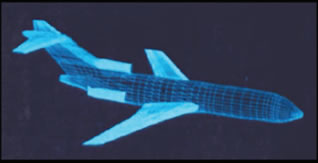Analysis of radar cross section assessment methods and parameters affecting it for surface ships
DOI:
https://doi.org/10.25043/19098642.72Keywords:
Radar Cross Section, RCS, vessels, RAM, absorbent, prediction, navyAbstract
This article presents an analysis of the different modeling methods for predicting the radar cross section of surface ships. In the analysis, we studied the effect of different factors in vessel construction regarding the amount of electromagnetic energy returning to a radar source, such as the handling of shapes, use of different materials, and vessel size. We can see the different evaluation methods of the radar cross section and the software tools available to determine an appropriate methodology for adoption by the Colombian Navy and their subsequent integration with the design process and optimization of warships.
Downloads
References
AIRPLANE DESIGN. (2011). AirPlane Design PJ Gates - Ship Detection and Counter Detection. Obtained from http://www.airplanedesign.info/
CADRCS, C. (2012). PC, MAC, and GNU/LINUX BASED SOFTWARE FOR RADAR CROSS SECTION SIMULATION. Accessed in October 2011.
CAMTECH Camouflage Technology. (2005). SPECTRO DYNAMIC SYSTEMS. Accessed inOctober 2011, from www.camouflage.com.au/SPECTRO/Solve%20Low%20Observe.htm
CHATZIGEORGIADIS, F. (2004). Development of Code For a Physical Optics Radar Cross Section Prediction and Analysis Application. Naval Postgraduate School.
CHEVALIER, F. L. (2002). Principles of Radar and Sonar signal processing.London: Artech House.
DÍAZ, V., DOMINGUEZ, K., & SARAVIA, J. (2012). Estado Del Arte Del Manejo De La Seccion Transversal De Radar.
DVICE. (2009). DVICE SWEDEN. Accessed inOctober 2011, from www.dvice.com/archives/009/02/sweden-creates.php
DVICE. (2012). DVICE. Accessed inOctober 2011, from www.dvice.com/archives/2009/02/top-secret-navy.php
FORECAST INTERNATIONAL. (2011). The Market for Anti-Ship. Revista(http://www.forecastinternational.com/samples/F658_CompleteSample.pdf ).
GARRIDO, E. J. (September 2000). Graphical User Interface for a Physical Optics Radar Cross Section Prediction Code. Master’s Thesis. Monterey, California: Naval Postgraduate School.
GATES, P. (2012). Ship Detection and Counter Detection. www.airplanedesign.info, www.ausairpower.net
gCaptain. (11 February 2009). Visby Class – Stealth Ship Of The Swedish Navy. Accessed in October 2011, from www.gcaptain.com/visby-classstealth-ship-of-the-swedish-navy?6484
JENN, D. C. (1995). Radar and Laser Cross Section Engineering. Washington D.C.: AIAA Educations Series.
JENN, P. D., GARRIDO, C. E., & CHATZIGEORGIADIS, M. F. (2004). Software: Pofacets 3.0. Monterey, California: Naval Postgrade School - Philippine Navy - Hellenic Air Force.
KNOTT, E. F., SHAEFFER, J. F., & TULEY, M. T. (2004). RCS. Technology & Engineering.
LUCERNHAMMER. (2010). Accessed inOctober 2011, from http://lucernhammer.tripointindustries.com/
MARITIME SAFETY INFORMATION. (2009). CHAPTER 1 — BASIC RADAR PRINCIPLES AND GENERAL CHARACTERISTICS. http://msi.nga.mil/MSISiteContent/StaticFiles/NAV_PUBS/RNM/310ch1.pdf.
MAYER, R. M. (1993). Design with reinforced plastics.
MICROWAVES 101. (2012). Microwaves101. Accessed inOctober 2011, from www.microwaves101.com
NET RESOURCES INTERNATIONAL AIRFORCE. (2012). Air-Force Technology. Accessed inOctober 2011, from www.airforcetechnology.com
NET RESOURCES INTERNATIONAL NAVAL. (2011). Naval - Technology. Accessed inOctober 2011, from http://www.navaltechnology.com/projects/lafayette/lafayette1.html
NOTICIAS 24. (2008). Missiles Fire and Forget. Noticias 24.
ORBIT-FR. (2012). Accessed inOctober 2011, from www.orbitfr.com
PAKISTAN DEFENSE. (2011). Pakistan Defense. Obtained from http://www.defence.pk/forums/bangladesh-defence/168816-bangladesh-army-52.html
REVISTA NAVAL. (2012). Revista Naval. Accessed in October 2011, from www.revistanaval.com/articulos/tecnologia_stealth.htm
RIUS CASALS, J. M. (1991). Sección recta de blancos radar complejos en tiempo real. Departament de Teoria del Senyal i Comunicacions. Catalunya, España: Universitat Politècnica de Catalunya.
ROKE. (2012). EPSILON. Accessed inOctober 2011, from www.roke.co.uk/epsilon/
SAHAJANAND. (2011). Sahajanand Laser Technology Limited. Accessed inOctober 2011, from http://www.sltmicrowave.com/products. php?tab=1Conical_Rubber_Based_Radar_Absorbent_Material
SIEPEL. (2011). Absorbants électromagnétiques. Accessed inOctober 2011, from http://www.siepel.com/fr/siepel-france /produit/absorbants-%C3%A9lectromagn%C3%A9tiques
SKOLNIK, M. I. (2001). Introduction to Radar Systems 3rd Edition. New York: McGraw Hill.
TAYLOR, M. (2012). Soviet Missiles. Obtained from http://personal.inet.fi/cool/foxfour/sovmis/sovmis-as.html
VIRTUAL MARINE ARSENAL. (2007). Virtual Marine Arsenal. Accessed in October 2011, from www.bodrum-bodrum.com/vorteks/arsenal/stealth.htm
WOLFF, C. (2011). Radartutorial. Accessed in October 2011

Published
How to Cite
Issue
Section
License
The authors who publish in this Journal certify that:
- The work submitted for publication in The Ship Science and Technology journal, was written by the author, given that its content is the product of his/her direct intellectual contribution.
- All data and references to material already published are duly identified with their respective credits and are included in the bibliographic notes and quotations highlighted as such.
- All materials submitted for publication are completely free of copyrights; consequently, the author accepts responsibility for any lawsuit or claim related with Intellectual Property Rights thereof, Exonerating of responsibility to The Science and Technology for the Development of Naval, Maritime, and Riverine Industry Corporation, COTECMAR.
- In the event that the article is chosen for publication by The Ship Science and Technology journal, the author state that he/she totally transfers reproduction rights of such to The Science and Technology for the Development of Naval, Maritime, and Riverine Industry Corporation, COTECMAR.
- The authors retain the copyright and transfer to COTECMAR the right of publication and reproduction of the work which will be simultaneously subject to the Creative Commons Attribution License (CC -BY) , which allows the license to copy, distribute, display and represent the work and to make derivative works as long as it recognizes and cites the work in the manner specified by the author or licensor.
- For more information about the Creative Commons Attribution License (CC -BY) and his use and scope, please visit the following web page https://creativecommons.org/licenses/by-sa/4.0/legalcode








